An introduction to Attribution Modelling
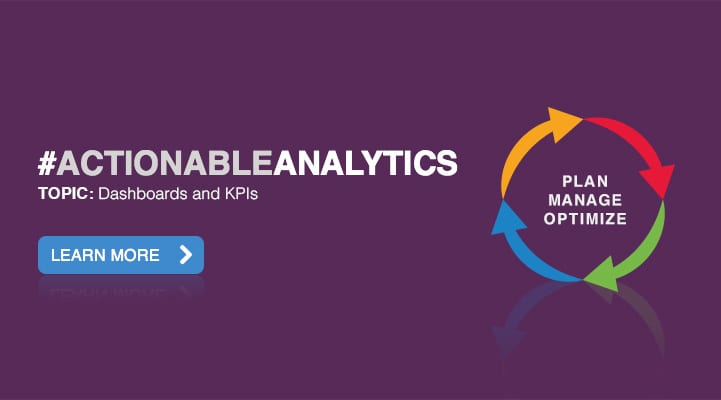
In a bid to connect web users with great content (and generally make the world a better place) Google is constantly tweaking its algorithm and filling SEO managers with dread.
Updates like Penguin and Panda have altered the fabric of search entirely. The things that used to take your website to Page 1 simply don’t work anymore. But don’t believe the harbingers of doom just yet: SEO isn’t dead… it’s different.
There are plenty of ways to understand your SEO effectiveness and so boost your rankings and improve the visibility of your site. An important part of the process is attribution modelling,
What is Attribution Modelling?
Attribution modelling is a system which can help you get the most from your marketing mix.
Modern web users are smart and they don’t always purchase the first thing they see online. Often, they don’t buy something until they’ve visited the site a number of times.
While they’re doing this, they might arrive by a different channel every time. An attribution model is the rule, or combination of rules, which decides the value of each channel.
Types of Interaction
The ways a user could get to your site are known as interactions and there are four major kinds:
- 1. Direct - A user types the URL into their browser and visits the site without interacting with the marketing mix.
- 2. Organic - A user searches for your company, or a relevant subject/industry, and the search engine provides them with a series of links to sites. These are known as organic search links. SEO is all about making sure the user chooses your link.
- 3. Paid Advertising - PPC links drive traffic to the site on a cost per click basis. The more successful they are the more they cost. Product listing ads work in the same way but appear on popular shopping websites. Social networks like Facebook and Twitter do paid ads too.
- 4. Referral - Most non-direct traffic comes from search engines but it can also arrive by referral. Any link to your site from a website or online article is known as a referral link.
Types of Attribution Model
Now that you know how a user could land on your site, you can decide which interaction works best for you.
An attribution model will help but there is more than one model to choose from.
Conversion Path in attribution models
There are 5 common attribution models and I will illustrate them all using a simple 4 step conversion path: organic, referral, paid advertising and direct.
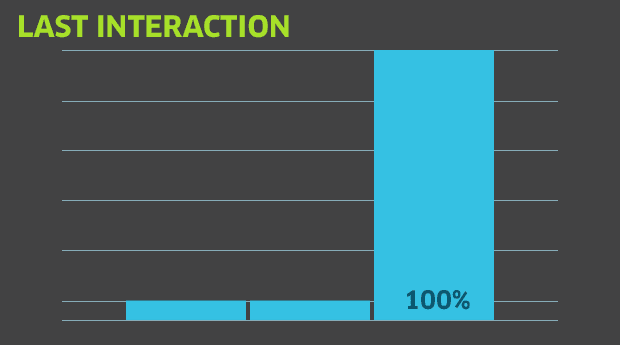
Last Interaction - The default Analytics setting. This method assigns 100% of the value of the conversion to the last way a user arrived at the site. This is the simplest way to establish value, but it doesn’t give credit to any other touch point in the decision making process.
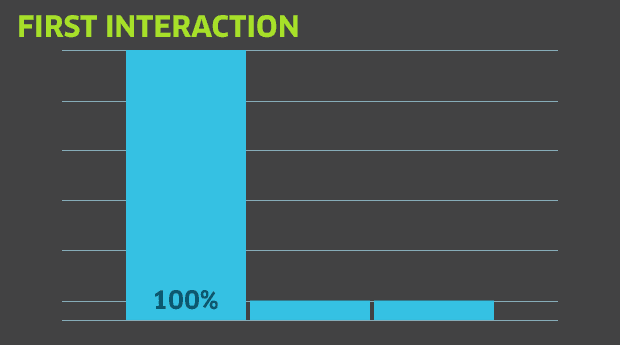
First Interaction - 100% of the credit goes to the start of the journey, because without this paid ad or link it is unlikely that a user would find the site in the first place. Many online marketers prefer to credit the first touch point on the conversion path; others go for even more detail...
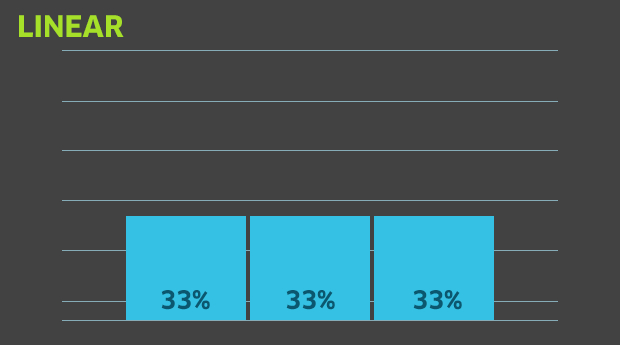
Linear - Here, equal value is given to each interaction. So if a user visits a site four times, through organic, referral, paid advertising and direct, then each get 25% of the credit. Conversion paths can range from 1 to 12+ interactions. All you have to do is divide the value by the number of steps.
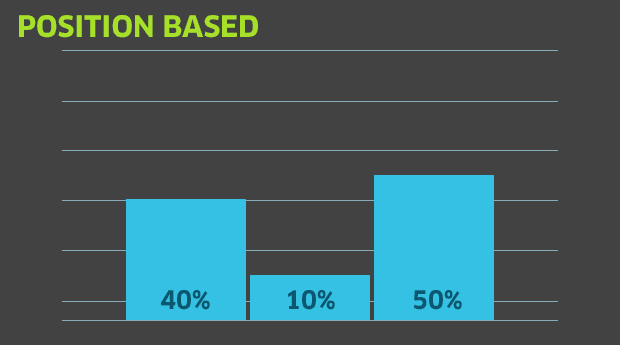
Position Based - This popular method assigns some value to every touch point but gives greater value to first and last. The most common way, known as the bathtub model, divides 80% of the conversion value between the first and last interaction; with 20% for everything in between.
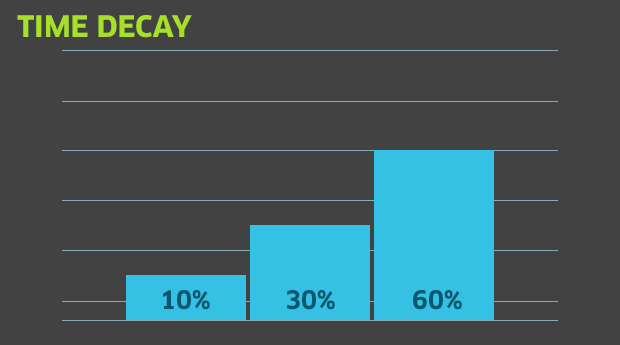
Time Decay - Another school of thought gives increasing value to every step on the journey. It’s known as the staircase model (since the value steps up) and it’s mostly used for short term campaigns and promotions where the purpose is to gain a conversion as quickly as possible.
Why is Attribution Modelling Important?
Put simply, it tells you which marketing channels work and which don’t.
Without attribution, your conversion data is probably dominated by direct traffic. This might lead you to believe that other channels are less valuable. But dig a little deeper and it’s likely that other channels play a much bigger part in the conversion process.
A customer might have converted on a direct visit but discovered your brand through a banner, PPC ad or SEO link. These channels are especially important if your business does not get a lot of return visits. New visitors who aren’t familiar with your brand won’t arrive direct.
Of course, attracting new visitors is what marketing spend is predominantly for. But attribution modelling is important for telling you which other channels are doing all the work; even if direct is taking the credit.
Introducers
PPC is an excellent introducer because it helps you capture visibility in an area that you’re not well known. Nowadays, there are a number of paid traffic sources and you can use attribution data to choose the right ones. You can even optimise each ad group within a paid advertising campaign.
In the past five years a variety of cost-per-click traffic sources have been introduced, including social media advertising and product listing ads, all of which are e-retail gold.
With attribution theory you can trial new paid search methods and close them off if they don’t perform.
The important thing to remember is that an ad group or product listing might not convert directly but could be part of a profitable conversion funnel by introducing customers to the site.
Often, nailing down the conversion can take time.
The Long Game
Since people don’t buy right away, time is a factor in every conversion process.
The number of sleeps that the average customer takes to consider your services will tell you a lot about your business and the way that you should spend your marketing budget.
We recently carried out some research on an existing client which proved that 50% of conversions were completed on the first day that a user came to the site. That’s a considerable amount, but just as much came through afterward; a lot of it up to three months after the first touch.
With attribution modelling we can track multi-touch conversion paths for up to 90 days. Customers are still visiting your site and considering a purchase until then. In the case of our client, 10% of conversions, and roughly 10% of total conversion value, came in between 61 and 90 days after the first interaction.
Fortunately, you have more tools and more information than ever before to capture impulse buyers and cautious types alike.
How do I use Attribution?
With a little insight you can get more from Analytics than ever before. Use Analytics to look up revenue/goals, and you’ll find that the system is set to last click.
But if a user converts through PPC after visiting several times through SEO, you should devote as much time and effort as possible to boosting your organic rankings, because this is an important part of the conversion path.
Google’s latest updates like useful, original content. So it’s over to your content team to draft help guides, FAQ’s and must-read blogs; plus other useful, creative stuff.
If analytics shows that one gateway into the site is frequently recorded as the last click, it is important to focus this channel on a strong call to action and ensure that these landing pages are optimised for conversion.
Tracking
Goal and conversion tracking will help you to monitor the performance of your campaign and make strategic decisions based on data; not guesswork. There are two kinds of goals that can be tracked: micro goals and macro goals.
- A micro goal is a conversion on site which does not directly generate money (newsletter sign ups, catalogue requests or contact page views). These actions matter to the success of the campaign but they don’t directly boost the bottom line.
- Anything that generates funds is known as a macro goal (direct sales and enquiries).
If you’re getting a lot of micro goal completions, but nowhere near the number of macros, then part of your campaign is probably flawed. Lots of newsletter sign ups but no sales? Then it’s time to improve your newsletter, incorporate more incentives or make your products more enticing.
You can also track users once they leave your site with retargeting.
Cookies are placed on key pages and follow users on their journey around the web. Next, you can display ads on relevant sites, to encourage them back and complete their purchase. With dynamic retargeting, you can even generate banners which feature images of products you know the users have looked at.
It’s an incredible development and one that e-commerce sites shouldn’t ignore.
According to retargeting software specialists Adroll, only 2% of online shoppers convert on the first visit to a site. Retargeting can help us to capture the other 98% and learn more about our customers in the process.
Attribution theory gives you the tools to do your homework. The rest is up to you. No online marketing campaign is going to be perfect from day one but attribution modelling allows you to monitor it and make it better over time. It’s never truly finished but that’s all part of the fun. It’s a marriage of technology, hard work and creativity, and it gets the most from an e-business site.

Thanks to Lewis Moulds for sharing his advice and opinions in this post. Lewis is Content Strategist at
Hit Search. He worked in the media industry, before turning his attention to PR and social media. He is an avid writer, whether at work, or home, or anywhere else. If you found this useful you can
download a more in depth guide on attribution modelling. You can connect with Lewis on
LinkedIn or Twitter @LewisMMarketing









 Thanks to Lewis Moulds for sharing his advice and opinions in this post. Lewis is Content Strategist at
Thanks to Lewis Moulds for sharing his advice and opinions in this post. Lewis is Content Strategist at 



